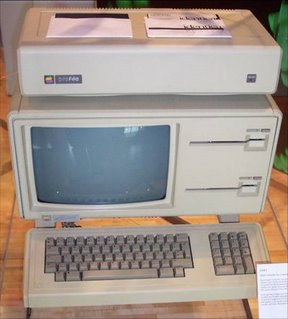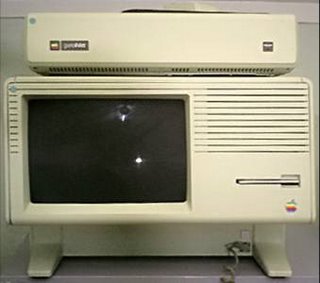Apple Lisa
The Apple Lisa was a revolutionary personal computer designed at Apple Computer during the early 1980s.
The Lisa project was started at Apple in 1978 and evolved into a project to design a powerful personal computer with a graphical user interface (GUI) that would be targeted toward business customers.
Around 1982, Steve Jobs was forced out of the Lisa project, so he joined the Macintosh project instead. Contrary to popular belief, the Macintosh is not a direct descendant of Lisa, although there are obvious similarities between the systems and a later version was sold as the Macintosh XL.
Back in 1996 the base price of a Lisa was $9 995US ($20,600 in Nov. 2006 dollars). It was one of the first commercial personal computers to have a GUI and a mouse. It used a Motorola 68000 CPU at a 5 MHz clock rate and had the total of 1 MB RAM. The first Lisa had two custom 5¼ inch floppy disk drives designed with two head assemblies, one per side, which could seek independently. These drives required custom media with two head openings. They were nicknamed "Twiggy" drives. An optional external 5 MB Apple ProFile hard drive (originally designed for the Apple III) was also offered on purchace. The later Lisa 2 models used a single 3½ inch floppy disk drive and optional 5 or 10 MB internal hard disks. In 1984, at the same time the Macintosh was officially announced, Apple announced that it was providing free 5 MB hard drive upgrades to all Lisa 1 owners.
Lisa had recently (3 days ago) celebrated its 23rd birthday (in a dump or a computer collectors home) after being discontinues during August of 1986 where 2 700 were buried in a landfill in Logan, Utah. Though Apple had acheived a large tax write off on the Lisas. Though like most GUI computers Lisas are a fairly valuable collectable item and are worth a hundreds or even thousands of dollars now.


